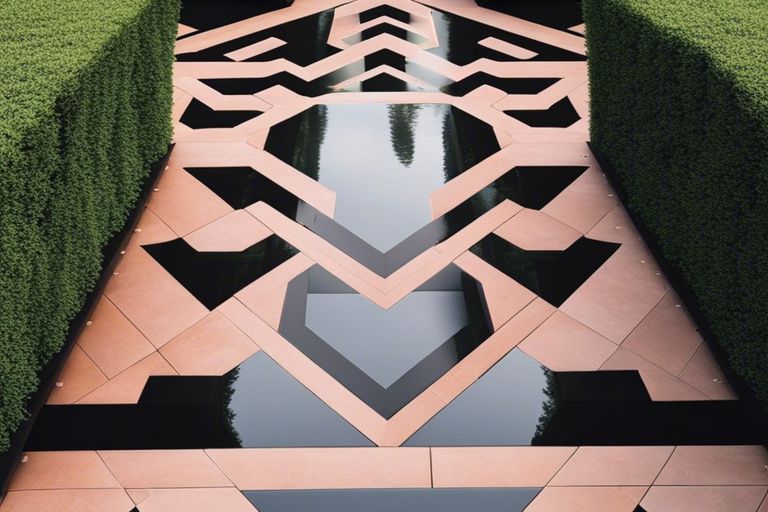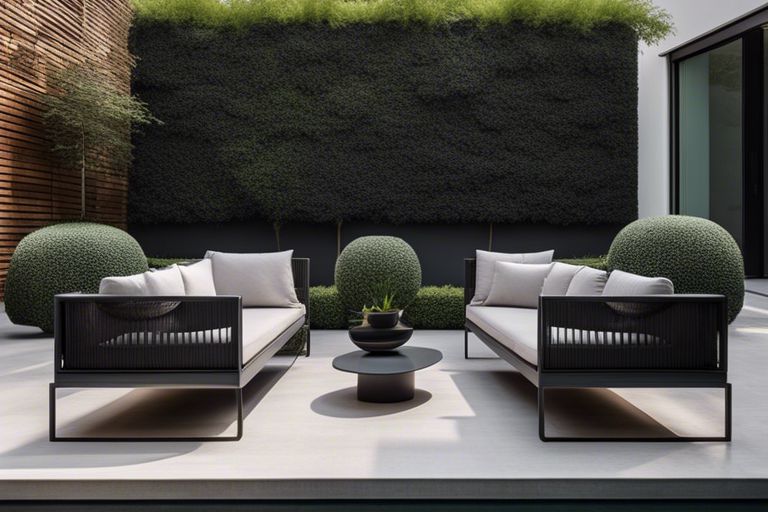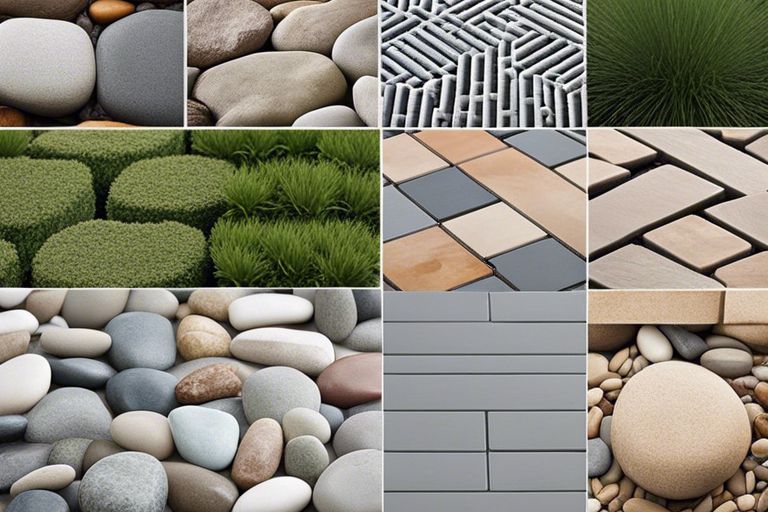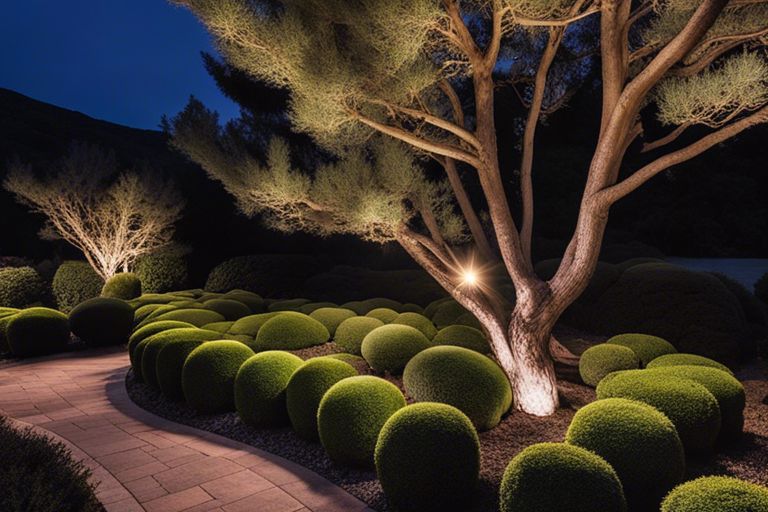This guide will help you unlock the beauty and functionality of black sandstone in your hardscaping projects. With its rich color and striking patterns, black sandstone can transform your outdoor spaces, making them both stylish and inviting. You’ll learn how to select the right type, understand its benefits, and discover the best techniques for installation and maintenance. Embrace this stunning material and turn your landscaping dreams into reality!
Key Takeaways:
- Versatile Applications: Black sandstone can be used for various hardscaping projects including patios, walkways, and retaining walls, offering a modern aesthetic to outdoor spaces.
- Durability: This material is highly resistant to weathering and wear, making it a long-lasting choice for high-traffic areas.
- Stunning Aesthetics: The unique color and texture of black sandstone enhance the visual appeal of landscapes, creating a striking contrast with greenery and other materials.
Understanding Black Sandstone
Before stepping into your hardscaping projects, it’s vital to understand the material you plan to use. Black sandstone is a striking natural stone that can add depth and elegance to your outdoor spaces. This type of sandstone is recognized for its rich color and varied textures, making it a popular choice for patios, walkways, and decorative features.
Types of Black Sandstone
Some of the common types of black sandstone can include:
| Type | Description |
|---|---|
| Black Diamond Sandstone | A dense stone known for its durability and unique speckled patterns. |
| Midnight Black Sandstone | This type is characterized by its deep, pure black color and smooth finish. |
| Graphite Black Sandstone | A softer stone with a matte finish that provides a contemporary look. |
| Charcoal Sandstone | It features dark gray tones with lighter veins, adding a beautiful contrast. |
| Basalt Sandstone | A volcanic stone that mimics the appearance of black sandstone with added toughness. |
The various types cater to different styles and applications, ensuring that there’s a perfect option for your specific hardscaping project.
Characteristics and Properties
Little do most people realize that black sandstone possesses unique characteristics that enhance both its aesthetic appeal and functional performance. It is known for its strength and durability, making it an excellent choice for outdoor applications subject to varying weather conditions. Its non-slip surface makes it especially suitable for poolside installations or walkways, while its porous nature allows for better drainage. The stone also reacts well to natural finishes, which can enhance its inherent beauty.
To ensure the longevity of your hardscaping project, be aware of the important characteristics of black sandstone. The stone can require periodic sealing to prevent staining and enhance its water resistance. However, its positive qualities far outweigh these maintenance requirements. The rich, dark hues paired with intricate textures can create a stunning visual impact that complements any landscaping design you might envision.
Factors to Consider Before Using Black Sandstone
You may have decided that black sandstone is the perfect choice for your hardscaping project, but before you dive in, there are several key factors to consider that can significantly impact the outcome of your work. Taking the time to assess these elements can ensure that your project not only meets your aesthetic desires but also functions well in the long term. Below are some important considerations:
- Climate and Weather Resistance
- Maintenance and Durability
- Budget and Cost-Effectiveness
Climate and Weather Resistance
Assuming you live in an area with fluctuating temperatures and varying weather conditions, it’s crucial to evaluate how black sandstone will perform in your locality. This material tends to be quite durable, but certain climates can pose potential threats. For example, in regions that experience extreme heat, humidity, or freeze-thaw cycles, black sandstone may develop surface cracks or become discolored over time. It’s advisable to check whether the stone is suitable for your area’s unique environmental conditions.
Moreover, understanding how your chosen stone reacts to moisture is necessary. While black sandstone is generally resistant, prolonged exposure to moisture could lead to issues such as moss growth or erosion. Therefore, installing proper drainage systems and ensuring that the stone is adequately sealed can protect it from these weather-related concerns, enhancing its longevity under your local climate.
Maintenance and Durability
Weather can affect not only the appearance but also the lifespan of your black sandstone. Regular maintenance is paramount for keeping it in prime condition, which involves cleaning, sealing, and performing necessary repairs. If you allow dirt and grime to build up, you may find yourself needing to invest more time and money down the line to restore its original beauty. Moreover, some types of black sandstone may be more porous than others, making them susceptible to staining and damage from spills or debris.
To maintain your black sandstone, consider using products specifically formulated for natural stone. This will not only enhance its shine but also provide a protective barrier against environmental elements. Additionally, establishing a routine cleaning schedule can prevent buildup and extend the durability of your stone.
Budget and Cost-Effectiveness
Durability and aesthetics often come with a price tag, and black sandstone is no different. When determining your budget for this material, consider both the upfront costs and the long-term expenses associated with maintenance and replacement. While investing in high-quality stone may seem daunting initially, the longevity of black sandstone can save you money in the long run. The initial investment might be more substantial, but it often outweighs the costs of frequent repairs and replacements that come with lower-quality materials.
CostEffectiveness can also involve considering the installation process. Hiring professionals for your black sandstone project, while potentially an additional cost, may ultimately lead to a more polished result and fewer mistakes that could necessitate costly corrections. Balancing these factors carefully will ensure that you make the most economical choice while still achieving your desired hardscaping look.
Knowing your options and weighing the pros and cons of each aspect will ultimately lead you toward making an informed decision about incorporating black sandstone into your hardscaping projects.
Pros and Cons of Using Black Sandstone
Now, as you explore the idea of using black sandstone for your hardscaping projects, it’s vital to weigh the pros and cons. Below is a comprehensive breakdown of what makes black sandstone an attractive option, as well as some factors to consider before making your choice.
Pros and Cons Overview
| Pros | Cons |
|---|---|
| Stunning aesthetic appeal | Can be prone to scratches and chipping |
| Versatile for various designs | May require sealing for durability |
| Natural stone with unique patterns | Color may fade over time with UV exposure |
| Good thermal conductivity | Heavier than other materials, making installation more challenging |
| Eco-friendly option when sourced sustainably | Potential for water absorption, leading to staining |
Aesthetic Advantages
Aesthetic factors play a significant role in your choice of hardscaping materials, and black sandstone offers a rich, elegant look that can enhance any outdoor space. The deep black hues are complemented by unique patterns and textures, adding a distinctive character to patios, walkways, and more. Its beauty can serve as a stunning backdrop for your garden or outdoor furniture, making your space irresistibly inviting.
Furthermore, black sandstone can blend seamlessly with a variety of colors and landscapes, retaining its charm alongside both vibrant and muted tones. Whether you’re aiming for a modern or classic aesthetic, you will find that black sandstone can adapt to your vision, making it a worthy investment for maintaining or enhancing your home’s exterior appeal.
Functional Disadvantages
To make an informed decision, you need to be aware of the functional disadvantages associated with black sandstone. While it offers a wealth of aesthetic appeal, its susceptibility to scratches and chipping can detract from its beauty over time. Additionally, if you live in an area with extreme weather conditions, the stone may require sealing to maintain its durability, which adds an extra layer of maintenance.
Using black sandstone also comes with challenges related to its weight. Heavy stones can complicate the installation process, requiring skilled labor that may increase your overall project budget. Moreover, black sandstone’s tendency to absorb water means it might develop stains if not treated properly. It’s vital to weigh these practical downsides against the visual benefits it presents.
Environmental Impact
Advantages of using black sandstone extend beyond aesthetics and functionality to encompass environmental considerations as well. When sourced from sustainable quarries, black sandstone can offer a more eco-friendly alternative to synthetic materials. Natural stone tends to have a lower carbon footprint and is biodegradable, making it a favorable choice for environmentally conscious homeowners.
It is vital to ensure that the black sandstone you choose is ethically sourced to maximize its environmental benefits. By doing so, you not only contribute to your local economy but also support sustainable practices in the stone industry. Consider checking resources like the Natural Stone Guide: All About Sandstone And Its Uses to understand better how your material choices impact the environment.
Tips for Working with Black Sandstone
Keep in mind that working with black sandstone requires careful attention during the preparation and planning stages. Doing so will ensure that your hardscaping project is successful and meets your expectations. Here are some important tips to help you get started:
- Always measure your space accurately to determine how much black sandstone you will need.
- Inspect the quality of your material, as uneven surfaces can lead to complications during installation.
- Consider the local climate when choosing the site, as excessive moisture can impact the longevity of your installation.
- Be mindful of color variations, and plan for where each piece will be placed to maintain a cohesive look.
By following these guidelines, you can set yourself up for success when working with black sandstone. Attention to detail during the planning phase will save you time and resources in the long run. Thou shall embrace this preparation stage as it lays the foundation for a stunning final result.
Preparation and Planning
For your project to be a success, make sure you have the right tools at hand. Investing in high-quality tools designed for masonry and stonework will make cutting and shaping the black sandstone much easier. Remember that the proper safety gear, such as gloves and goggles, is crucial to protect yourself from any potential hazards.
Additionally, create a detailed plan outlining your design, layout, and any specific features you want to include. A visual representation can help you coordinate your efforts and ensure you remain focused throughout the process. You may even want to consult with a professional if you feel uncertain about any aspect of your project.
Cutting and Shaping Techniques
Now that you’ve planned and prepared your project, it’s time to think about cutting and shaping techniques for your black sandstone. Utilize diamond blade saws or wet saws to achieve a precise cut. If your project requires intricate shapes or patterns, consistent practice and patience are key to mastering the tools.
This process may take time, but the effort is worth it in the end. As you work, be mindful of the natural layers in the stone, as they can influence how it cuts. Understanding the material’s properties will make the task easier and lead to better results.
Installation and Sealing Methods
Black sandstone requires care during both installation and sealing. First, ensure your base is stable and well-prepared. A level surface will prevent shifting or heaving over time. When laying your stones, arrange them in a pattern that complements your overall design while leaving appropriate joints for mortar or grout.
After installation, you will want to apply a suitable sealer to protect the black sandstone from stains and weathering. Ensure to choose a sealer designed specifically for natural stone to maintain its beauty and integrity. Additionally, thorough cleaning prior to sealing is crucial, as residues can affect the final appearance.
Sealing your black sandstone not only enhances its color but also provides protection against moisture and stains. Regular maintenance and resealing will help maintain the integrity of your installation for years to come. With consistent care, you can preserve the stunning profile of your hardscaping project. Thou shall remember that adherence to proper methods is fundamental in achieving the best results.
Your Step-by-Step Guide to Black Sandstone Hardscaping Projects
| Step | Description |
|---|---|
| 1. Designing Your Project | Plan the layout and define the purpose. |
| 2. Preparing the Site | Clear and prepare the ground for installation. |
| 3. Laying the Black Sandstone | Place the stones according to your design. |
| 4. Finishing Touches and Maintenance | Seal, clean, and maintain your project. |
Designing Your Project
Projects involving black sandstone start with the critical step of designing your layout. You need to determine how you envision the space and what purpose it will serve. Whether you want to create a stunning patio, a serene pathway, or an impressive wall, take time to sketch your ideas. Consider the size, shape, and arrangement of the stones, allowing your creativity to flourish. Each decision will directly impact the aesthetics and functionality of your hardscaping project.
Next, think about the surrounding elements and how they will interact with the black sandstone. Will you incorporate plants, lighting, or furniture? Use these considerations to guide your selection of materials and colors. The beauty of black sandstone can shine even more brightly with the right design choices, making it important to plan for a harmonious and cohesive look.
Preparing the Site
Assuming you have a clear design in mind, the next step is preparing the site for your black sandstone installation. Begin by clearing the area of any debris, vegetation, or existing hardscaping materials. It’s crucial to assess the ground for any uneven spots that will need leveling for stability. Once the area is cleared, mark the layout using stakes and string to ensure precision as you work.
Evaluate the soil type and drainage conditions, as these factors will influence the longevity of your hardscaping project. Make adjustments as necessary, as strong, well-drained soil is vital for supporting the weight of the black sandstone and preventing future issues.
Understanding the importance of a well-prepared site cannot be overstated. It provides a solid foundation that helps prevent shifting and cracking of your stones, ultimately extending the lifespan of your project.
Laying the Black Sandstone
Now that your site is prepared, it’s time to lay the black sandstone according to your design. Start from a corner or edge, placing each stone closely together to avoid gaps. It’s important to check for levelness with each stone, adjusting as needed. If you’re creating a patio or pathway, you can use a slight slope for drainage, ensuring water moves away from structures.
As you lay each stone, consider the pattern you want to achieve. Whether opting for a classic layout or a more modern, random arrangement, your choice will affect the overall appearance of the completed hardscaping project. Always keep an eye on the alignment; this will determine the aesthetic appeal of your finished space.
For instance, if you are creating a curved path, work with smaller pieces of black sandstone to maintain a smooth flow. Cut stones carefully if needed, and ensure that edges are secured to prevent shifting later on. The attention to detail during this stage is crucial for achieving stunning results.
Finishing Touches and Maintenance
Finishing your black sandstone project goes beyond simply laying the stones. Finishing touches include sealing the stones, which protects them from stains and weathering. After the installation is complete, clean any debris or dust off the surface and apply a high-quality sealant for added durability. This step is important for maintaining the rich color and strength of the sandstone, keeping it looking fresh and new for years to come.
Once installed, ongoing maintenance will help preserve your hardscaping investment. Regularly sweep away debris and check for any loose stones or cracks. If needed, reapply sealant every year or two to protect against water damage and fading. Your commitment to maintenance will ensure your black sandstone remains a stunning addition to your landscape.
It’s paramount that you adopt a proactive approach when it comes to maintenance. Regular attention to your hardscaping will not only enhance the visual appeal but also extend the life of your black sandstone installation, making it a worthwhile endeavor for years ahead.
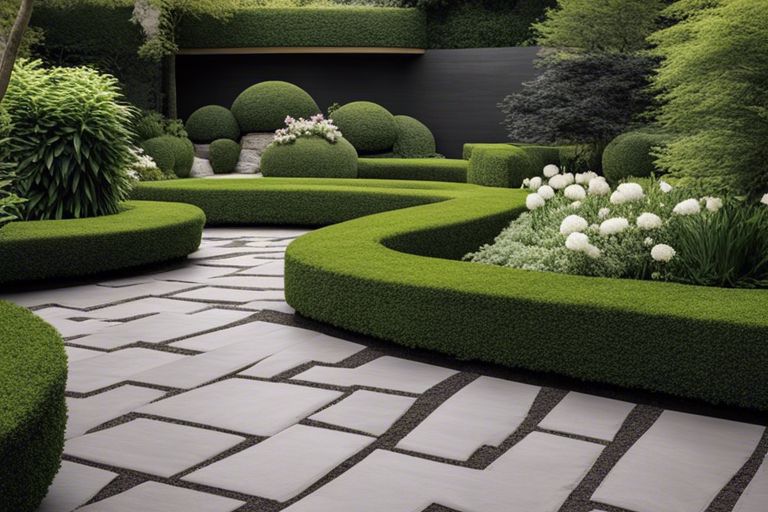
Common Applications of Black Sandstone in Hardscaping
For those looking to enhance their outdoor spaces, black sandstone is a remarkable choice. Its unique color and texture not only bring a contemporary edge to your landscape but also ensures durability and low maintenance in various hardscaping applications. Below, we’ll explore some of the most common uses of black sandstone and how they can elevate your outdoor aesthetics.
Patios and Walkways
Applications of black sandstone for patios and walkways offer a stylish and functional solution to your outdoor areas. The rich, dark hues combined with the flecks of lighter minerals create a stunning visual contrast that can complement any garden or home exterior. Furthermore, its naturally slip-resistant surface provides a safe walking path, permitting you and your guests to navigate your landscape with ease.
Additionally, the versatility of black sandstone allows for various design choices, such as large flagstones for a more rustic feel or smaller, more uniform pavers for a contemporary look. Either way, incorporating black sandstone into your patios and walkways will undoubtedly transform your outdoor space into a welcoming retreat.
Pool Decks and Coping
Hardscaping using black sandstone for pool decks and coping is an excellent way to create a luxurious atmosphere around your swimming pool. This stone not only provides a beautiful edge to your pool but also offers a cool surface for bare feet, even during the hottest summer days. Its resilience against the elements makes it a fitting choice for wet and damp conditions, ensuring it remains attractive for years to come.
Coping around the pool is also instrumental in providing structural support and safeguarding the pool’s integrity. Black sandstone’s strength and durability make it ideal for this purpose, while its aesthetic appeal elevates the overall charm of your pool area.
Retaining Walls and Borders
Any landscape can benefit immensely from incorporating black sandstone into retaining walls and borders. Its robust nature allows it to withstand the pressures of soil and water, thus serving effectively in preventing erosion and creating tiered gardens. In addition to its stability, the deep, rich tones of black sandstone create a commanding visual statement that can delineate spaces beautifully.
To construct a retaining wall, black sandstone is often cut into blocks or slabs, which not only ensure structural integrity but also provide a natural look that blends seamlessly into the surrounding environment. This use of black sandstone can enhance not just the functionality of your landscape, but also its overall appeal, making it an invaluable choice for your hardscaping needs.
To wrap up
Upon reflecting on your journey through the various applications and benefits of black sandstone in hardscaping projects, it’s clear that this unique material holds the potential to transform your outdoor spaces into stunning environments. From patios to pathways, black sandstone not only offers durability and strength but also adds an aesthetic appeal that can elevate any landscape design. Incorporating this natural stone into your hardscaping choices allows you to create a cohesive look that harmonizes with other elements of your property, making it an ideal option for those looking to make a lasting impression.
As you move forward with your hardscaping projects, remember the versatility and timeless elegance of black sandstone. With the right planning and design considerations, you can utilize this material to enhance not just the functionality of your outdoor area, but also its beauty. Embrace your creativity and envision your outdoor spaces transformed with black sandstone, allowing you to enjoy a captivating and inviting environment for years to come.
FAQ
Q: What are the benefits of using black sandstone in hardscaping projects?
A: Black sandstone offers several benefits for hardscaping projects. Firstly, its striking dark coloration provides a dramatic contrast to greenery, making your outdoor space visually appealing. Secondly, black sandstone is durable and weather-resistant, ensuring longevity in various climate conditions. Additionally, it has a natural, porous surface that can manage drainage effectively. Moreover, this type of stone is relatively easy to work with, allowing for various applications such as patios, walkways, and retaining walls, giving homeowners flexibility in design.
Q: How should I maintain black sandstone once it’s installed?
A: To maintain black sandstone and preserve its beauty, regular cleaning is important. Use a soft-bristle broom or a pressure washer on a low setting to remove dirt and debris. Avoid acidic cleaners, as they can damage the stone’s surface. To protect the stone, consider sealing it with a suitable stone sealant, which will help repel water and prevent staining. It’s also advisable to remove any organic materials, like leaves or moss, quickly to prevent discoloration or growth on the surface. Regular inspections for cracks or chips will help in prompt repairs, ensuring your hardscaping project remains in pristine condition.
Q: Can black sandstone be used in both residential and commercial hardscaping projects?
A: Yes, black sandstone is versatile enough to be used in both residential and commercial hardscaping projects. Its aesthetic appeal makes it a popular choice for residential patios, walkways, and garden features, while its durability makes it suitable for high-traffic areas in commercial settings such as shopping centers, parks, and outdoor plazas. Whether you are designing a cozy backyard or a bustling business façade, black sandstone can enhance the environment and withstand the demands of regular use, making it a reliable and attractive option for various applications.
